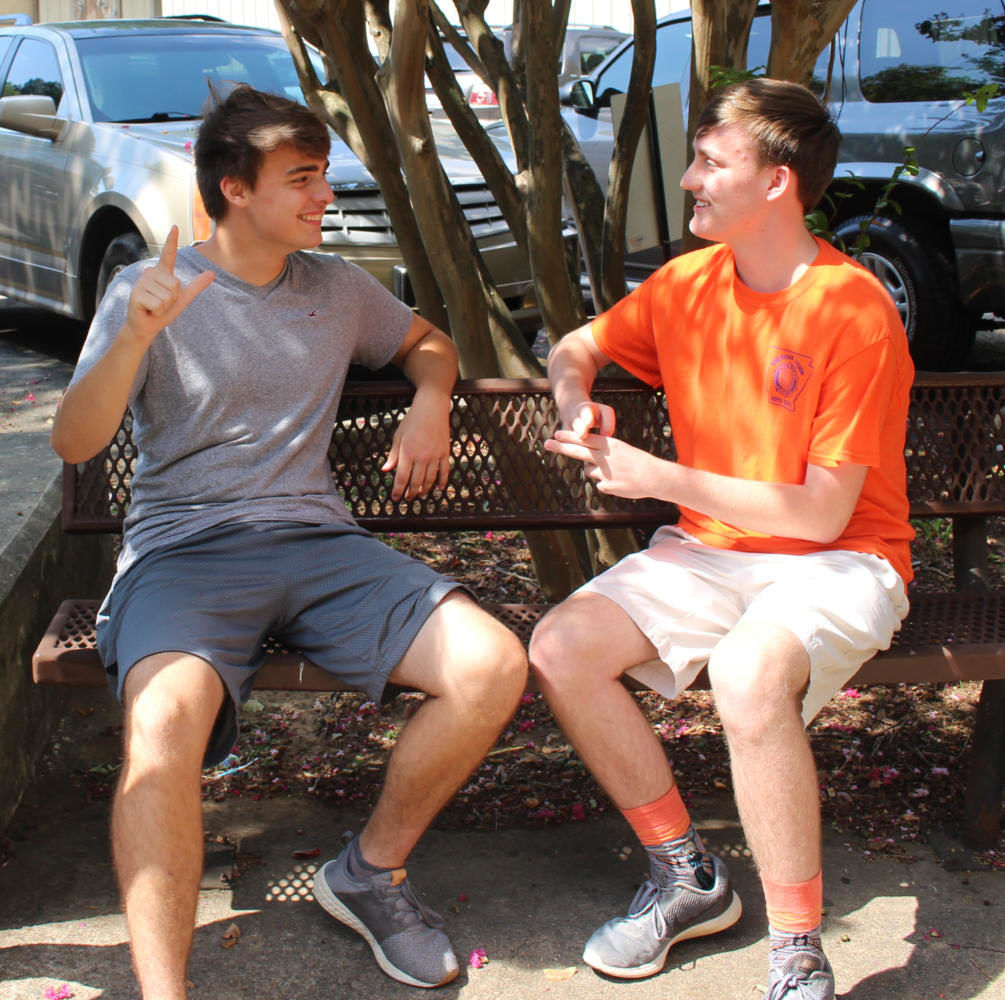ASL Classes Needed in Schools
September 12, 2017
Arkansas contains a large population of people who are deaf, and ironically enough, they are the ones who are not being heard by the rest of their community in a metaphorical sense.
ASL stands for American Sign Language and is the official language of deaf Americans. In the state of Arkansas there is only one school for deaf students, Arkansas School for the Deaf (ASD), which is also the only school in the state that offers ASL classes. This means that children throughout the entire state must either commute to Little Rock or live on campus to receive an education in their own language.
Most, if not all, deaf individuals do not see their deafness as a disability, but an enormous contribution to their personality and who they are. No one should be rejected or feel left out due to something that is not within their control. Deafness should be accepted and celebrated; adding ASL classes to schools and teaching hearing people how to communicate can help overcome language barriers and create new relationships throughout communities. Those who are deaf should not have to rely on interpreters to feel included or to know what is happening around them. Those of us who are blessed with the ability to hear should do what we can to make them feel welcomed and appreciated. Of course, not every single person can become an ASL expert, but simply knowing how to sign the alphabet can go a long way for someone who expects to be rejected and ignored every day.
Central is known for countless accomplishments, one of which is a large selection of foreign languages. Most Central students, and Principal Nancy Rousseau herself, are interested in the topic but do not have the time, money, and/or transportation to learn ASL outside of school.
“If I had the time I would learn ASL myself; it’s on my bucket list. I don’t remember there ever being a club [for ASL], but I would love to see one,” Rousseau said.
Seniors Maddie Flegal, Lanie Fussell, Merve Duyar, and Ina Kim are just a few of those who agree that ASL courses and/or clubs would benefit their school for the better. Also, juniors Nyah Peyton and Ashley Richardson agree that they are both interested, but simply do not have the time outside of school.
Here is a message for students with this issue: there are plenty of alternative, out-of-school methods to help individuals learn ASL including, but not limited to, websites such as http://www.signlanguage101.com, which uses video tutorials and group classes at ASD that meet once a week in person for 10 weeks. All information for ASD classes can be found on their website.
When most hearing people come in contact with those who are deaf, they can freak out, panic, becomed stressed, or sometimes ignore the deaf person. This is simply not acceptable.
Here are some tips for interacting with deaf people: learn your ASL basics, practice when you can, and do your best to effectively communicate with them.
PSA: the deaf don’t bite! Most are happy that someone has taken the time to learn their language and include them. Being deaf doesn’t make anyone less human; learning a new language and making new friends could be steps away if there were classes and clubs for ASL at Central.




Maggie Johnson • Jan 19, 2018 at 10:11 am
This was an amazing article and a great way to get opinions out on the ASL courses that are available in Little Rock. I actually was very interested in taking a course at the Arkansas School for the Death in January. I think looking into a sign language club/course would be a great thing to consider, especially for those who may have deaf friends and want to learn more and be able to communicate easier. I would be very interested in learning sign language in high school because I think it benefits everyone in the long run. Personally, I think it is very known for people to get nervous when around deaf people because they don’t know sign language and there is no other way to communicate with that person. Overall, I think this was a great article and sign language courses/clubs should definitely be looked into to.